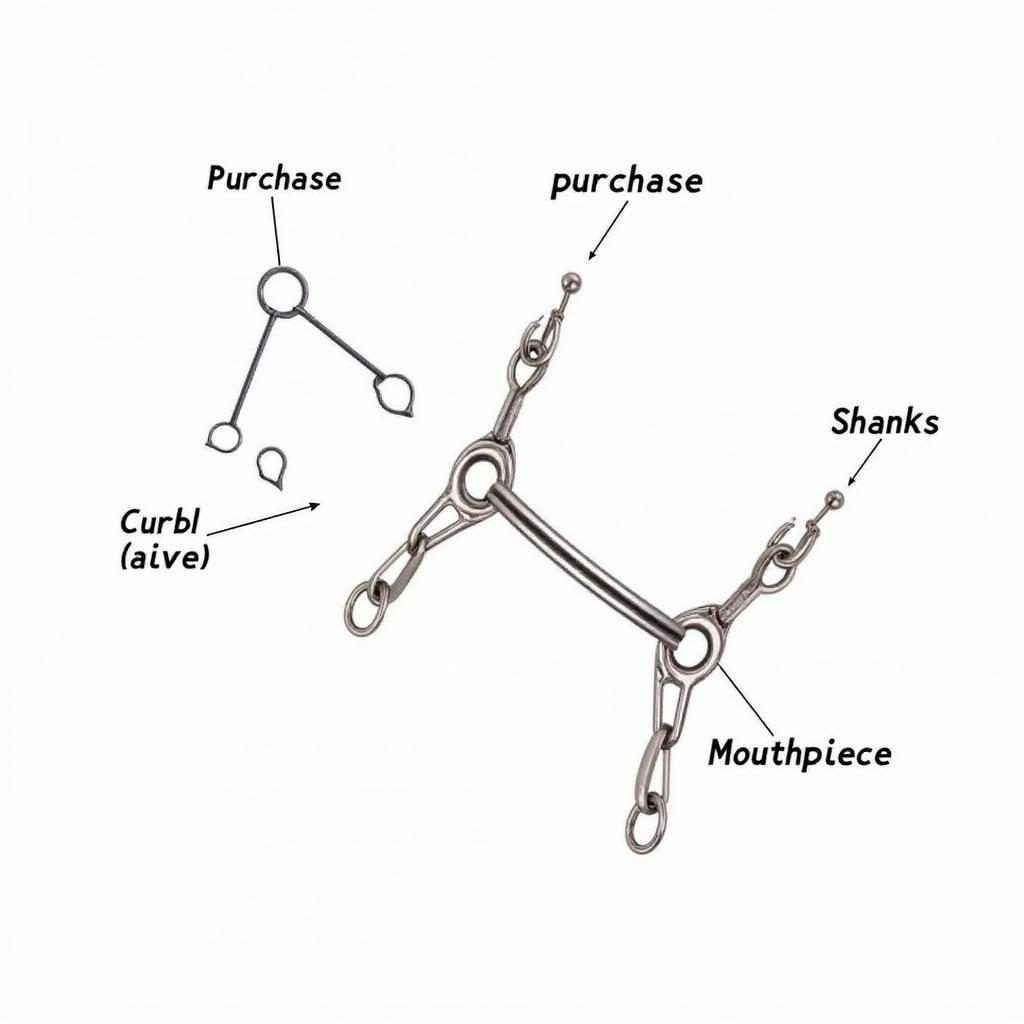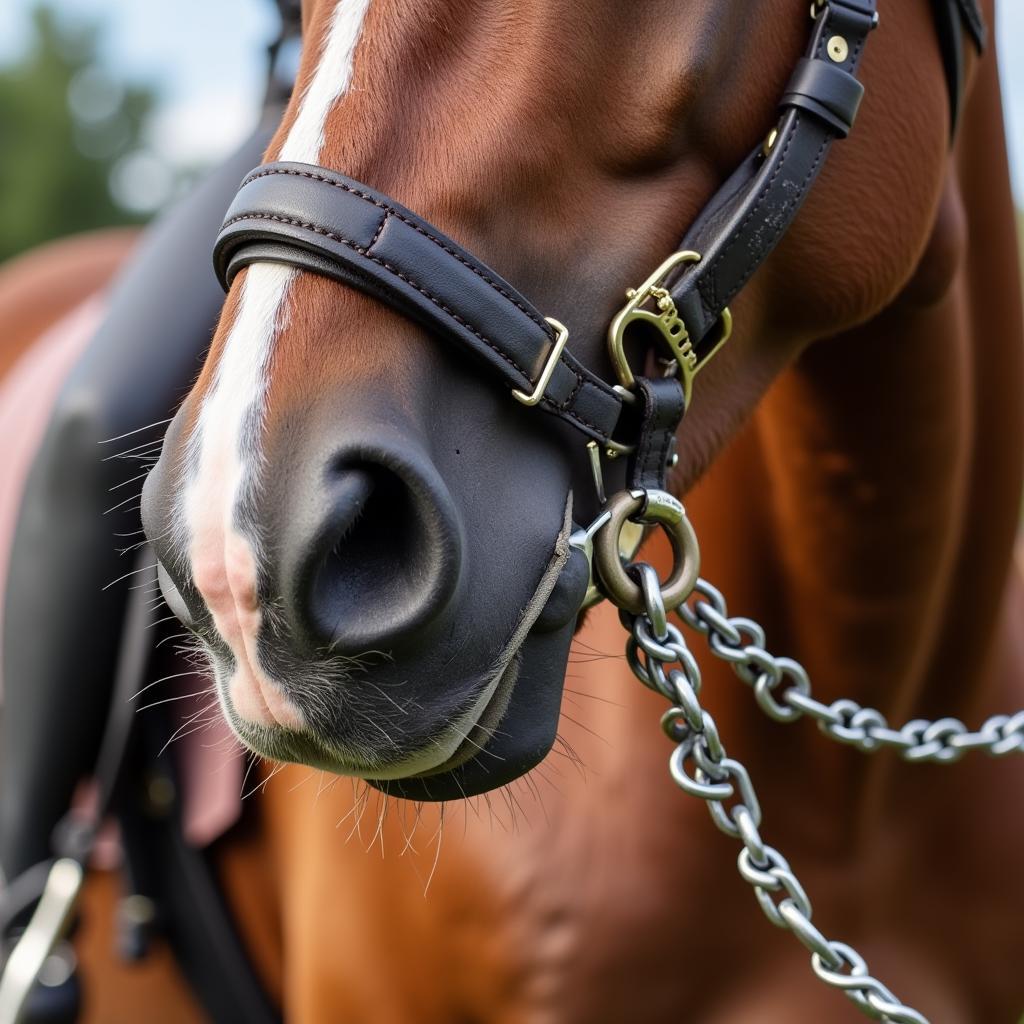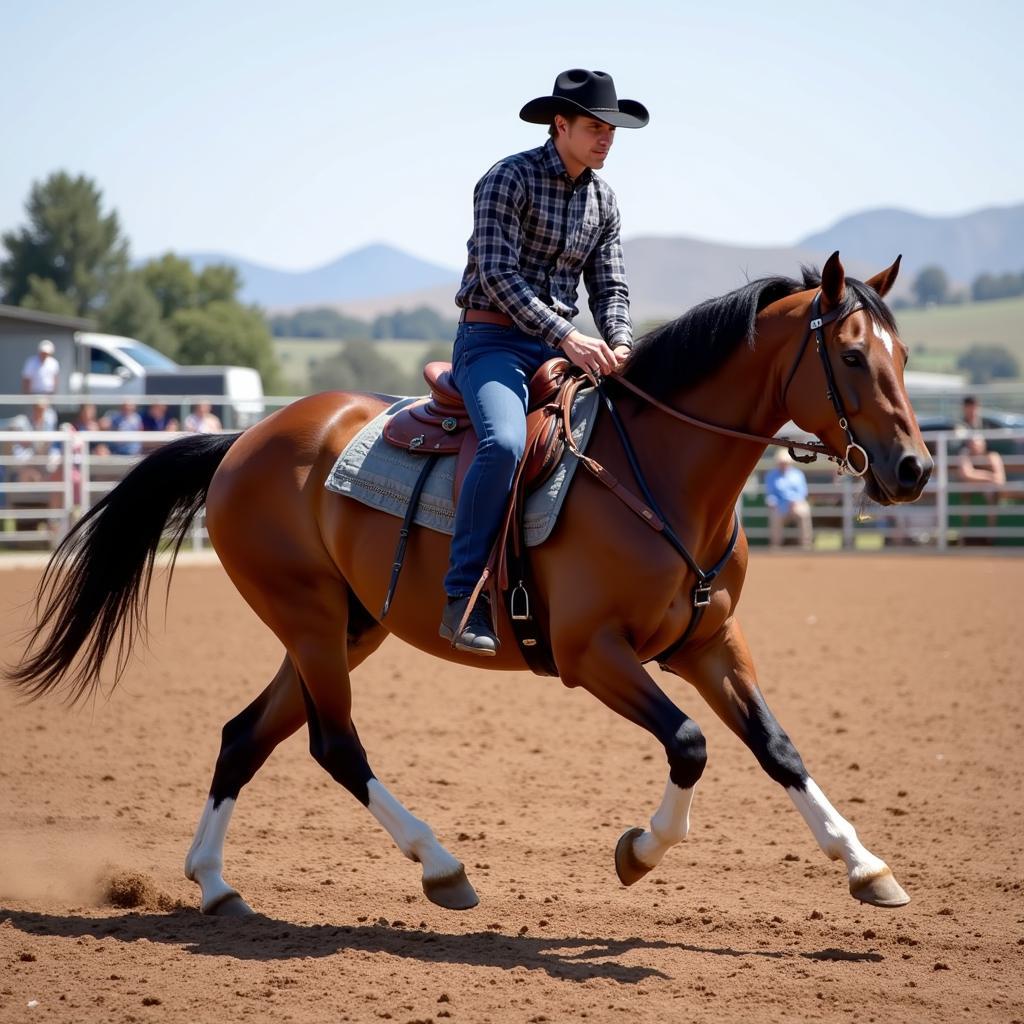The term “Curb Horse” might seem a bit perplexing at first. It doesn’t refer to a specific breed, color, or even a horse confined to a curb. Instead, it speaks to a training technique and the specialized equipment used, specifically the curb bit. This bit, easily identified by its shanks or cheeks, utilizes leverage to amplify the pressure applied to a horse’s mouth, encouraging a specific head and neck position often desired in disciplines like Western riding.
 Anatomy of a Curb Bit
Anatomy of a Curb Bit
How Does a Curb Bit Work?
Unlike a snaffle bit, which operates on direct pressure, the curb bit relies on leverage. When the reins are engaged, the shanks rotate backward, creating pressure points on the poll (top of the head), the chin (via the curb chain), and the bars of the mouth. The length of the shanks directly correlates to the severity of the leverage – longer shanks equate to more pressure.
 Curb Bit in Action
Curb Bit in Action
It’s crucial to understand that the curb bit is not inherently cruel or harsh. In skilled and sensitive hands, it can be a valuable tool for refining communication and achieving a desired level of collection and responsiveness. However, improper use or harsh handling can lead to pain, discomfort, and behavioral problems in the horse.
The Role of the Curb Chain
The curb chain, an integral part of the curb bit system, plays a pivotal role in pressure distribution. It lies in the horse’s chin groove and engages when the reins are pulled. This engagement creates upward pressure, encouraging the horse to yield at the poll and bring its nose in.
The fit and adjustment of the curb chain are paramount. A loose chain will offer minimal leverage, while an overly tight chain can cause discomfort and pain. It’s generally recommended that two fingers should comfortably fit between the chain and the horse’s chin.
Disciplines and Uses of Curb Bits
Curb bits are most commonly associated with Western riding disciplines such as reining, cutting, and pleasure. They’re favored for their ability to encourage a horse to work “on the bit” – a term describing a horse moving with a rounded back, engaged hindquarters, and a soft, responsive mouth.
 Western Horse Ridden in a Curb Bit
Western Horse Ridden in a Curb Bit
However, curb bits are also utilized in some English disciplines, particularly those requiring a high degree of collection and precise movements.
The Importance of Proper Training and Use
The use of a curb bit should only be undertaken with a well-trained horse and a knowledgeable, experienced rider. A horse needs to understand the signals communicated through a snaffle bit before transitioning to a curb.
Choosing the appropriate curb bit for your horse’s mouth conformation, temperament, and level of training is crucial. There are numerous types of curb bits, each with varying shank lengths, mouthpiece designs, and curb chain options.
Ultimately, the curb horse, much like any horse trained with specialized equipment, represents a partnership built on clear communication, trust, and respect between horse and rider.